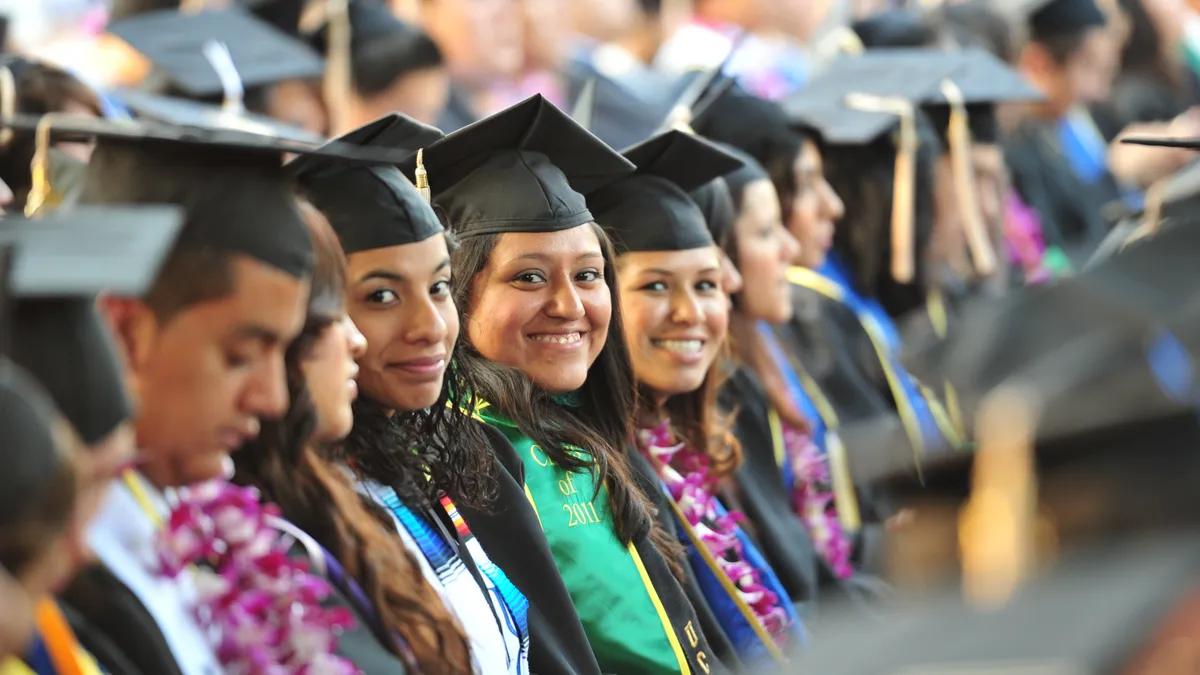Higher education institutions have a particular mission of "becom[ing] much broader in our participation and be willing to answer the difficult, sticky questions we have in our society," Freeman A. Hrabowski, president of the University of Maryland, Baltimore County, reminded industry leaders at the American Council on Education conference this month. Part of being in the industry, he said during his ACE lifetime achievement award speech, is staying committed to the ideal of raising up the most downtrodden parts of society by making an education accessible.
And, part of effectively accomplishing this goal comes with leaders' ability to look outward from the institution to find different approaches to a problem, said experts at a concurrent ACE panel. For instance, institutions in British Columbia, Canada, have tried to build up the aboriginal communities there, said Ralph Nilson, president of Vancouver Island University, one of the panel participants.
"These institutions have really focused in the recent years on reconciliation missions with a population of people who are not able to access universities in a way that they should, and particularly with First Nations communities that have been marginalized," said Nilson, who explained that while the building of institutions on those lands have in one sense contributed to the current isolation of the tribes, providing access to education can be used as a tool of liberation and reconciliation.
In the British Columbia institutions' efforts to help members of these communities more effectively access higher education, leaders have chosen to go into the communities, reach out to individuals and learn their ways of acquiring knowledge in order to better deliver a product.
"With the indigenous population, for years cultural anthropologists have used their information and developed wonderful careers around them," he said. "What we do is that we go to the source of that information, the elders of the community who are owners of the knowledge. Provided that their young children Identify as members of that community, we now place them in our faculty goals. Our faculty union has supported them in recognizing their education and different ways of knowing."
Considering socio-emotional learning
Similarly, another panel member, Marta Losada, president of Universidad Antonio Nariño in Bogotá, Colombia, said that effectively reaching out to underserved parts of Colombia's population required considering the unique socio-emotional learning environments they required to feel like they thrive.
"One of the difficulties of policy more recently is that the government wanted to create more possibilities for lower-income families to access financial aid and go to the best institutions," said Losada. "It was great that they were able to do this and reach out to about 40,000 students and get them into more elite institutions, but they forgot about the component of social-emotional support. When you come into an environment you aren’t used to, this issue of adaptability comes with up with succeeding in these programs," she said.
She explained leaders within the sector need to do a better job of considering the external, personal barriers students face to not only excelling once they get to campus, but also being able to contribute effectively to the communities they come from, so the well-intentioned efforts don't end up contributing to a systemic system of inequality.
"Do we have effective means and relevant programs for all kinds of students at the tertiary level? Another drawback is to provide special benefits for lower income families was a big brain drain, they were taken out of their cities, brought to the urban areas, so this has a long-term negative impact on the areas they are from. How do you provide something that’s relevant without hurting them?" said Losada.
Panelist Paul LeBlanc, president of Southern New Hampshire University, echoed these sentiments, noting that the U.S. is still behind in addressing the needs of indigenous populations and the industry ought to consider more thoughtfully the importance of environments.
"In serving underserved population, we are thinking about moving away from a model of asking people to go to a location that’s really not built for them, and sometimes sending signals that they don’t belong. That signal is often sent to first generation students, but also often gets sent to deeply underserved students," he said.
Focusing on quality assurance
But while adaptability is essential to an institutions' ability to serve marginalized students, so is a focus on providing an educational experience that will have returns in the long run, said LeBlanc, and strategies ought to revolve around the outcomes and whether all types of students can achieve lifelong success — a key part of working toward an equitable society.
And while at the onset of the Great Recession higher education was focused on the idea of getting graduates jobs, now institutions ought to focus on whether they are producing the right kinds of graduates, particularly with the rise of automation and other technologies that are changing the nature of work, he said.
"Thirty-five years ago a college degree was a signal to the labor market that you knew stuff that you knew how to write, that you knew how to comport yourself in front of an audience. The labor market is now more skeptical," said LeBlanc. "Now employers are looking for more demonstrable evidence that graduates can do what we say they can."
"Can we even get to a taxonomy of jobs that tells us that will be machine-only, machine and human only? As institutions, you need to think about this and be in conversation with industry and find out what are the new ways of knowing," he said. "You are going to go in and out of a new learning ecosystem — that's what’s happening now with micro-credentials. Degrees won't go away, but they will be part of a larger array. We will have to think less rigidly about the different entry and exit points of higher education, which also means we have to think more about interoperability, because students will be getting their education from a different number of pieces."
















